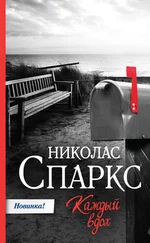She trails off, unable to find the word. Watching her struggle, I finish for her.
“A treasure chest?”
Her head snaps up. “Yes,” she immediately says. “It was like discovering a treasure chest in the unlikeliest of places. But you did not understand that yet.”
“At the time, most of the artwork I saw struck me as a collection of random colors and squiggly lines.”
“It was Abstract Expressionism.”
“Same thing,” I tease, but Ruth is lost in the memory of that day.
“We must have spent three hours there, wandering from one work to the next.”
“It was more like five hours.”
“And yet you wanted to leave,” she says reproachfully.
“I was hungry,” I reply. “We didn’t have lunch.”
“How could you even think of food when we were seeing such things?” she asks. “When we had the chance to talk to such amazing artists?”
“I couldn’t understand a thing you said to them. You and the artists were speaking a foreign language. You would talk about intensity and self-denial, while throwing around words like Futurism, Bauhaus, and synthetic Cubism. To a man who sold suits for a living, these words were gibberish.”
“Even after my father explained it to you?” Ruth seems exasperated.
“Your father tried to explain it to me. There’s a difference.”
She smiles. “Then why did you not force me to leave? Why did you not take my arm and steer me to the car?”
This is a question she has wondered about before, whose answer she has never fully understood.
“Because,” I reply as always, “I knew that staying was important to you.”
Unsatisfied, she nonetheless presses on. “Do you recall who we met that first day?” she asks.
“Elaine,” I say automatically. I may not have understood art, but people and faces were within my grasp. “And, of course, we met her husband, too, though we didn’t know then that he would later teach at the college. And then later in the afternoon, we met Ken and Ray and Robert. They were students – or, in Robert’s case, later would be – but you spent a lot of time with them as well.”
By her expression, I know she’s pleased. “They taught me many things that day. I was much better able to understand their primary influences after speaking with them, and it helped me to understand much more about where art would be headed in the future.”
“But you liked them as people, too.”
“Of course. They were fascinating. And each of them was a genius in his own right.”
“Which is why we continued to go back, day after day, until the exhibition closed.”
“I could not let this remarkable opportunity pass. I felt lucky to be in their presence.”
In hindsight, I see that she was right, but at the time all that mattered to me was that her honeymoon be as memorable and fulfilling as I could make it.
“You were very popular with them as well,” I point out. “Elaine and her husband enjoyed having dinner with us. And on the final night of the show, we were invited to that private cocktail party at the lake.”
Ruth, replaying these treasured memories, says nothing for a moment. Her gaze is earnest when she finally meets my eyes.
“It was the best week of my life,” she says.
“Because of the artists?”
“No,” she answers with a tiny shake of her head. “Because of you.”
On the fifth and final day of the exhibition, Ruth and I spent little time together. Not because of any tension between us, but because Ruth was eager to meet even more faculty members, while I was content to wander among the works and chat with the artists we’d already had the chance to get to know.
And then it was over. With the exhibition closed, we devoted the next few days to activities more typical of newlyweds. In the mornings we walked the nature trails, and in the afternoons we read by the pool and went swimming. We ate in different restaurants every evening, and on our last day, after I made a phone call and loaded our suitcases in the trunk, Ruth and I got into the car, both of us feeling more relaxed than we had in years.
Our return trip would bring us past Black Mountain one last time, and as we approached the turnoff on the highway, I glanced over at Ruth. I could sense her desire to return. Deliberately, I took the exit, heading toward the college. Ruth looked at me, her eyebrows raised, obviously wondering what I was doing.
“Just a quick stop,” I said. “I want to show you something.”
I wound through the town and again made a turn she recognized. And just as she’d done back then, Ruth begins to smile.
“You were bringing me back to the lake by the main building,” she says. “Where we attended the cocktail party on the last night of the exhibition. Lake Eden.”
“The view was so pretty. I wanted to see it again.”
“Yes.” She nods. “That is what you said to me back then, and I believed you. But you were not telling the truth.”
“You didn’t like the view?” I ask innocently.
“We were not going there for the view,” she says. “We were going there because of what you had done for me.”
At this, it is my turn to smile.
When we arrived at the college, I instructed Ruth to close her eyes. Reluctantly she agreed, and I took her gently by the arm and walked her down the gravel path that led to the lookout. The morning was cloudy and cool, and the view had been better at the cocktail party, but it really didn’t matter. Once I settled Ruth in exactly the right spot, I told her to open her eyes.
There, on easels, were six paintings, by those artists whose work Ruth had admired most. They were also the artists with whom she’d spent the most time – work by Ken, Ray, Elaine, Robert, and two by Elaine’s husband.
“For a moment,” Ruth says to me, “I did not understand. I did not know why you had set them up for me.”
“Because,” I said, “I wanted you to see the work in the natural light of day.”
“You mean the art that you had bought.”
That was, of course, what I had been doing while Ruth met with the faculty; the phone call that morning had been to make sure the paintings would be set up by the lake.
“Yes,” I say. “The art that I bought.”
“You know what you did, yes?”
I choose my words carefully. “I made you happy?” I ask.
“Yes,” she says. “But you know what I am talking about.”
“That wasn’t why I bought the paintings. I bought them because you were passionate about them.”
“And yet…,” she says, trying to make me say it.
“And yet, it didn’t cost me all that much,” I say firmly. “They weren’t who they later became, back then. They were simply young artists.”
She leans toward me, daring me to continue. “And…”
I relent with a sigh, knowing what she wants to hear.
“I bought them,” I say, “because I’m selfish.”
I’m not lying about this. Though I bought them for Ruth because I loved her, though I bought them because she’d loved the paintings, I also bought them for me.
Quite simply, the exhibition changed Ruth that week. I had been to countless galleries with Ruth, but during our time at Black Mountain College something inside her was awakened. In a strange way, it magnified a sensual aspect of her personality, amplifying her natural charisma. As she studied a canvas, her gaze would sharpen and her skin would flush, her whole body reflecting a pose of such intense focus and engagement that others couldn’t fail to notice her. For her part, she was completely unaware of how transformed she appeared in those moments. It was why, I became convinced, the artists responded so strongly to her. Like me, they were simply drawn to her, and it was also the reason they had been willing to part with the work I purchased.
Читать дальше

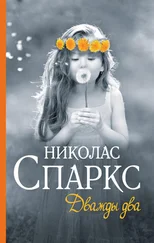
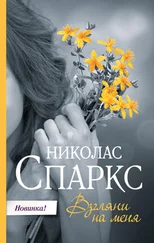
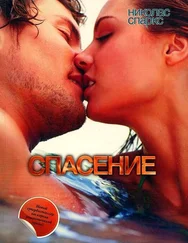


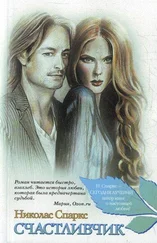

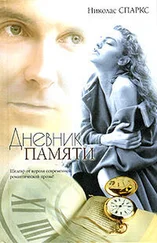
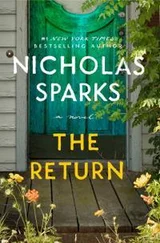
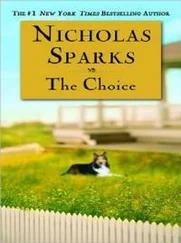
![Николас Спаркс - Каждый вдох [litres]](/books/414723/nikolas-sparks-kazhdyj-vdoh-litres-thumb.webp)
